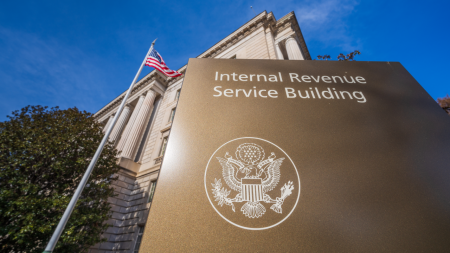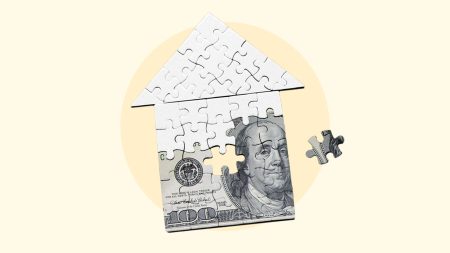Key takeaways
- A car insurance premium is money you pay to your insurance company in exchange for an active insurance policy.
- Car insurance providers calculate personalized premiums based on your risk of filing a claim, considering factors like your driving profile, vehicle, location and more.
- Shopping for quotes, applying for discounts and adjusting your coverage are some of the ways you can reduce your car insurance premium.
A car insurance premium is the cost of maintaining an active car insurance policy. Paying your premium can feel a bit unrewarding since the only time you will truly benefit from the transaction is when you’re involved in an accident or other claim-related event — something you hope never happens. But the costs from an accident can quickly skyrocket, so it’s a financial protection you’ll likely want to have. Additionally, car insurance is legally required in almost every state, so you may not have a choice. But the amount you will actually pay for car insurance premiums depends not only on the coverage you select, but also on your personal driving profile and how effectively you shop for quotes and leverage discounts.
What is a car insurance premium?
The national average premium for a full coverage car insurance policy as of October 2024 is $2,388 per year, according to Bankrate’s study of average rates from Quadrant Information Services. The minimum coverage average is $664 per year. An insurance premium is the cost of your auto insurance policy and is sometimes called an insurance rate. Your total premium amount may cover you for six months or a year, depending on the policy length options your company offers, but you can typically pay your premium quarterly or monthly rather than as a lump sum.
A premium in car insurance is what keeps your policy in force. As long as you continue paying auto insurance premiums on time and meet the terms of your policy, your insurance company ensures financial protection for you and your vehicle in the event of a covered loss. If you stop paying the premium, the insurer has the right to cancel your policy after a certain period. Once your car insurance company cancels your policy, your coverage terminates, which may leave you with a lapse of coverage if you don’t secure other coverage beforehand.
Payment options for car insurance premiums
When it comes to payment plans, your car insurance company probably has several options. You can typically pay your premium in full or in installments, usually monthly, quarterly or semi-annually, depending on the length of the policy term. Often, you get the best rate on insurance when you pay in full and avoid installment and processing fees.
There are a few things you might want to consider before choosing a payment plan. Although you may save money by paying your premium in full, you may want to consider installments if this lump sum will cause you financial hardship. Most companies will allow you to change your payment plan in the middle of your policy term, too. Perhaps you’d like to start your policy on a monthly payment plan, but later on, find that paying in full makes more sense. If you have specific questions regarding your payment plan options, you may find it helpful to contact your insurance agent.
How are car insurance premiums calculated?
Car insurance premiums are highly personalized. There are a number of factors that providers use to calculate your unique rate, and these vary based on state laws. Some of these factors you can control, and others you cannot. Here are some of the things that impact your car insurance premium:
Your location
Your location is one of the biggest factors to impact your car insurance premiums. Average rates vary greatly by state based on minimum insurance requirements, driver demographics and risk factors like weather patterns and accident rates. Even within a state, your rates may vary based on location down to the ZIP code level. For example, drivers in large cities usually see higher insurance rates as there is typically more traffic congestion, more accidents, higher vehicle crime rates and more expensive repair costs compared to rural areas.
Your personal characteristics
Many individual factors affect your car insurance premium, but these may vary based on your state. In most states, your age, gender and credit history impact your car insurance premium. Generally speaking, younger drivers tend to pay higher premiums than older drivers because they have less experience on the road. Male drivers tend to pay more for car insurance than female drivers. In addition, drivers with poor credit typically pay higher rates than those with good or excellent credit as actuarial data show how you handle your finances is a predictor of potential future claims.
Your driving record and claims history
Insurers look at your driving record and your claims history when determining your policy rate. Accidents, speeding tickets and several past claims may indicate to carriers that you are a risky driver. As a result, you may be charged more for coverage. However, insurance companies typically only consider accidents and tickets for three to five years, so you may see rates level out again if you continue to practice safe driving habits.
Your vehicle
The make and model of your car have a significant impact on the amount of your car insurance premium. For example, insurance on a brand-new car or a luxury SUV can be much pricier than insurance on a 10-year-old sedan. High-value cars are generally more expensive to fix if they are damaged or if you get into an accident. If your car gets totaled or stolen, the insurance company would have to compensate you based on the car’s current value. Generally, the higher the car’s value, the higher your insurance premium will be.
Your coverage selections
How much auto insurance coverage you carry will impact your premium. Generally speaking, more coverage types and higher coverage limits will result in a higher premium. Choosing just your state’s minimum coverage requirements will typically result in the cheapest premium but may not offer enough financial protection in the event of an accident or other covered incident. Adding full coverage, including comprehensive and collision insurance, adds coverage for your own vehicle. Other common add-ons include roadside assistance coverage, gap insurance, new vehicle replacement and rental car reimbursement.
Other drivers on your policy
Adding one or more drivers to your car insurance policy will impact your rates. This is because insurers assess the overall likelihood of accidents and claims, including the individual risk level of all listed drivers. The additional driver or drivers’ driving history and other personal rating factors will be considered during underwriting.
For example, adding a young driver to an adult driver’s insurance policy typically increases the rate for the policy, as having a teen driver on a policy increases the statistical risk that the vehicle will be in an accident.
How to save on car insurance premiums
Although car insurance can be expensive, there are many ways that you may be able to lower your rate. Here are some potential options for getting a cheaper car insurance premium:
Shop around and compare quotes
Experts often recommend shopping around and comparing quotes from several auto insurance providers when looking for a new policy. Carriers each utilize their own proprietary rating systems when underwriting policies. One result is that drivers can face significantly different car insurance rates between insurers. Before starting, it’s helpful to know any special coverage needs you or your vehicle may require. Once that’s determined, select several potential insurers that fit your criteria and request quotes from each. Make sure to specify the same coverage types and policy limits each time for the most accurate comparison.
Apply discounts
Almost every insurance company offers discounts that might lower your premium. Some discounts are more significant than others. Bundling your car insurance with another policy like home or renters coverage could generate substantial savings on your total policy premium. Other discounts are commonly available for being a good student, remaining claims-free and driving a car with strong safety ratings. You may also qualify for a discount if you pay your premium in full, enroll in paperless billing or set up autopay. It can be beneficial to review the discounts each carrier offers when comparing quotes.
Check your coverage
You may be paying for more coverage than you want or need. While many insurance professionals recommend maintaining as much auto insurance as you can afford, you could find that your coverage is out of alignment with your needs and budget. Depending on the types of car insurance you have, you may be able to reduce your premiums by dropping unnecessary coverage or lowering the limits. In some cases, you may find that you have duplicate coverage.
For instance, some phone and credit card companies offer roadside assistance to their customers, eliminating the need to pay extra to have roadside assistance included in your car insurance policy.
Frequently asked questions
Read the full article here












